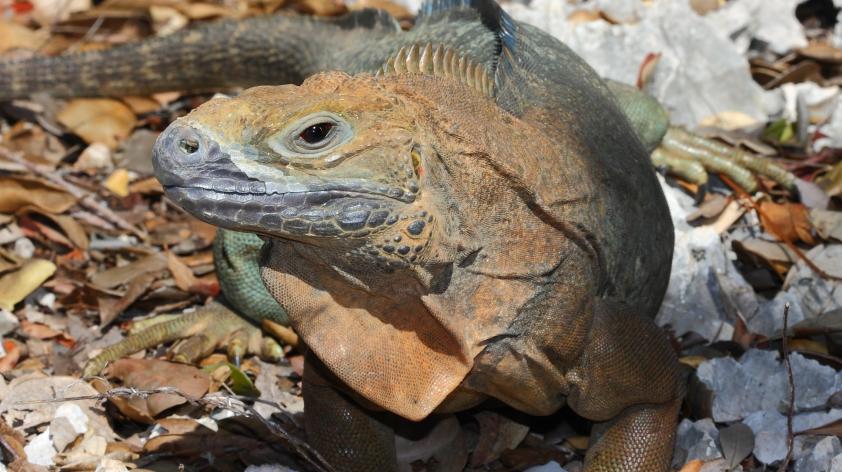
Changing Attitudes for Jamaican Iguana Conservation
On my first trip to Jamaica in July 1994, I was thrilled to be working with the new recovery program for Jamaican Iguanas. These beautiful large lizards were only just rediscovered in 1990 after having been presumed extinct since the 1940s. Because it was estimated there were fewer than 50 iguanas remaining in the wild, the newly formed recovery group created an ex situ assurance population at a handful of zoos in the U.S., including the San Diego Zoo which received a group of 3 males and 3 females in 1996.
The recovery group also initiated a headstart program at the Hope Zoo in Kingston. This strategy involves monitoring nests in the wild and transferring baby iguanas to the Hope Zoo to be raised in safety until they are large enough to deter the voracious non-native Indian Mongoose, which was in large part responsible for the iguana’s decline. This strategy would enable the iguana population to increase, and bide us time to solve the larger issues of predator control and forest protection.
Because I was travelling through Jamaica twice a year in the mid-1990s, on the way to Cuba to work with Dr. Allison Alberts’s research team studying Cuban Iguanas, it was easy for me to stop in at Hope Zoo and help out with this program too! Led by the Fort Worth Zoo, a U.S. zoo-based team of folks built sturdy enclosures for the young headstarted iguanas, as well as an educational exhibit on zoo grounds.
During those early years, my excitement upon arrival in Kingston was dampened somewhat in the first few hours by talking with random people on the way to the Zoo.
“Oh!” said the first passport control agent I met with a heavy shudder, “I hate lizards!”
When I got into a cab at the airport, in a thick local accent the driver said, “Jamaica has iguanas? Lizards are no good!”
I had been expecting this, because I knew that most Jamaicans feared lizards as part of their cultural heritage, and many held on to the belief that bad things would happen to you if a lizard touched you. Still, I was surprised that almost no one I spoke to knew about the amazing re-discovery of their iguana – an animal only found in Jamaica. As part of the action items in the Species Recovery Plan, we intended to change these attitudes for the better.
At the Hope Zoo, our team always made time during our trips to speak with elementary school groups about the program and the uniqueness of their iguana and its forest home. A local environmental advocacy group, Jamaica Environment Trust, also engaged school teachers throughout the region.
Finally, Dr. Byron Wilson at the University of the West Indies (UWI) in Kingston developed a conservation biology curriculum with the iguana recovery program highlighted. He regularly brought his classes to the Hope Zoo while we were there, and led class excursions to the Hellshire Hills to get hands-on familiarity with the iguana’s dry tropical forest home.
Today, some 20 years later, these efforts have certainly paid off for the benefit of Jamaicans and their endemic flora and fauna.
Now when I travel through passport control and state I am working with the iguana program, all the agents I’ve met are familiar with our successes. On this last trip in March, our team encountered eager receptive faces from the UWI students. I was particularly impressed with the informed and thoughtful questions from the group that demonstrated their respect for the important role that iguanas play in the forest ecosystem.
Having said that, I was absolutely shocked that almost every student willingly touched iguanas in the headstart facility and many enthusiastically wanted to hold one! I call that amazing progress that bodes well for long-term conservation goals!













